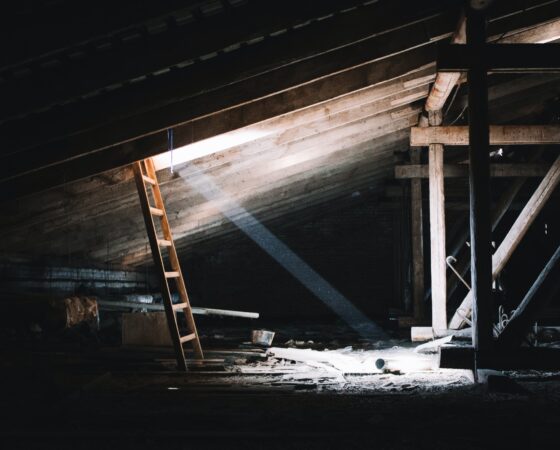Sunday of the Transfiguration | February 19, 2023 | Matthew 17:1-9 | Dave Brooks |
One of the gifts that Eastern Orthodox Christians have given us are icons. These images of Christ, the saints, and scenes from Church history have a rich theology, are a source of controversy and even scandal across some portions of the Christian world and are often misunderstood even by well-meaning non-Orthodox.
But to talk about icons in the Church points us to a deeper issue. In Genesis 1:26-27 we read that adam, (human beings) were made “in the image and likeness of God.” A most intriguing phrase. Down through the centuries, theologians of all stripes have proposed lots of ideas to pin down thatthing that makes the human being an image of God (εἰκόνα θεοῦ, for those of you keeping score in Greek). Perhaps it’s the human body, or maybe the soul; maybe it’s a combination of the two. Then again, maybe it’s intellect or rationality that marks the human as made in God’s image. Others have argued that the image in found in the ability to know and to be known, or perhaps in the ability to love and share community. It might be in the will, the capacity for power, or the ability to rule over other parts of creation.
Pondering the fact of being made in God’s image raises other thoughts, other questions. Many Christians wonder and argue over how and how much the human resemblance to God been damaged or altered by the Fall. Many a human, grappling with the effects of the Fall in his or her personal life, might be forgiven for wondering if the damage can be undone, or if that altered image can be renewed or restored.
Yet all these important topics, and all the good questions they can raise, must finally yield to an even more important point. There is only reason for any image to exist. It serves to point to something beyond itself. The photographs of your family members are pointless as objects in and of themselves; they have value in direct connection to how well they can point beyond themselves to the person they represent—literally, the photo “re-presents” the person to you. A photo that is damaged, smudged, smeared, torn or otherwise obscured draws attention to itself: how did this happen? What that stuff on this one? Who is this blurred figure supposed to be? Similarly, writers of icons say that the images serve as “windows” by which something heavenly may be seen. We don’t normally look at the window, but rather at what lies beyond—if you are noticing the window, then something has gone wrong. Maybe it’s dirty, or cracked, or warped; maybe it’s particularly impressive or spectacular—but noticing the window itself means that something is off.
I think that speculating about how we are images sets us up for the same mistake the Corinthian Christians made. Over these last weeks, Paul has begun reframing their debates and arguments about the spiritual gifts that were manifested among them. They wanted to know and understand sensible things, like which gifts were more important, or whether spectacular gifts—for instance, speaking in tongues—were better than other, less impressive ones. It made sense to them that they should crave the best gifts, and if they were tempted to judge one another because of their relative spiritual prowess, well, good judgment is important. As you know, Paul is exasperated by them and over twelve chapters points out that first, none of us has any reason to brag, and second, it is not the gift that matters, but the Giver that matters! In this way, Paul echoes the Lord Jesus in Luke 10, who, when his disciples come back high-fiving each other for the way that they can send the demons packing, says “your power against evil is not the point; God’s power for you and presence with you is! Don’t rejoice over what you do for God! Rejoice over what God does for you and give him glory.”
Our world certainly likes to celebrate the idea that we are all images of God, eikons, but sadly, many of us live lives that ensure others see us rather than see through us to God, that glorify ourselves rather than the God who made us. The last two years have highlighted something that has been growing for decades: Christians are virtually indistinguishable from non-Christians, except for the fact that we volunteer at this not-for-profit rather than or more than some other not-for-profit. How we spend our money or our time; our decisions about our health, where we will live, the careers or jobs we pursue and encourage our children to pursue; the ways we use social media, participate as citizens or vote; how we understand our spiritual life and participation as a member of a parish. And if you are inclined to argue with me about the details of any of those, my response is I’m only telling you what non-Christians observe (or assume): when they look at us, they see that we make our decisions about such things and more entirely on how it affects us, or reflects on us, rather than whether it gives glory to God.
And so we baptize, we bury the adam into death because it is not simply that we have been made as icons, as images of God, but that we must be remade—we must be rewritten. The Scriptures are clear: only one person is the ikon, as Paul declares in Colossians: Jesus, the Son is the image (the ikon) of the invisible God. We must follow him to be reimaged, reimagined, rewritten. Rewritten—our character, a word that starts with the Greek word for “engrave” or “imprint” must be changed, even remade.
For a dazzling moment, three men looked, as if through a window, and saw the divine glory, saw the blinding truth, saw that perfection in which all created things are made complete. And then the moment was gone. They wanted to stay. Jesus turned away, back to daily life, not claiming any of the things that made him equal to God but living a life, rejoicing, trusting God even to the end. Dying horribly, he was vindicated and shown as the icon of God, that we might love the God we cannot see. Jesus and his life, death and resurrection represent, reveal, show the truth of God. And those three men followed him down to what awaited them all.
As we celebrate the Transfiguration, the thing that is most important for you and me to understand is that this is not simply the story of another man—yes, an important man—from long ago, but that this man has made it possible for us to begin living again as the eikons of God that we were always intended to be but are not. With Lent on the doorstep, we have a fresh chance to walk as the baptized, to practice resurrection–those things that Jesus teaches us. Let us do it—full of belief and confidence, holding to the promise from God who always keeps his word. Let’s see how inventive we can be in encouraging love and helping one another. Let’s not avoid worshiping together as we’ve gotten in the habit of doing, but I say again, encourage one another in love and grace, in faith and joy, so that others may see, not us, but the beautiful, the glorious, the wonderful one who has made us his.
—
Pastor Dave Brooks
Raleigh, NC USA
Pr.Dave.Brooks@zoho.com

